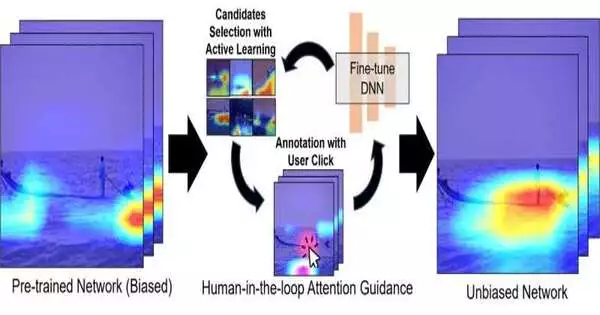“AI” has grown in popularity over the last few years as a buzzword in technology. It’s intriguing to consider the possibility of a computer performing tasks that would otherwise require a human.
There are numerous ways to create artificial intelligence, but deep neural networks (DNNs) are currently one of the most widely used techniques. These structures are typically trained on a dataset prior to being applied in the real world and attempt to mimic the neural connections and functionality of the brain. DNNs can be “taught” to recognize features in an image by training them on a dataset beforehand. In order to identify an image, a DNN may be trained, e.g., using a dataset of pictures of boats as training data.
Nevertheless, a poorly designed training dataset can be problematic. For instance, in the case of the prior illustration, since photographs of boats are typically taken with the boat submerged in water, the DNN might only detect the water and still identify the boat as being present in the photograph. When training DNNs, this is referred to as a co-occurrence bias, and it is a very frequent issue.
“Our findings have the potential to significantly improve neural network transferability and interpretability by enhancing their accuracy for real-world applications. As systems make correct and unambiguous conclusions, people’ trust in AI grows, making it easier to implement these systems in the real world.”
Associate Professor Xi Yang of Jilin University,
Researchers from the Japan Advanced Institute of Science and Technology (JAIST), Associate Professor Xi Yang of Jilin University, Project Lecturer Chia-Ming Chang of the University of Tokyo, and Professor Takeo Igarashi have developed a new human-in-the-loop system to address this issue. A paper describing this system was included in the Proceedings of the 28th International Conference on Intelligent User Interfaces (ACM IUI 2023).
Prof. “There are some existing methods to address the co-occurrence bias by either rearranging the dataset or instructing the system to concentrate on particular regions of the image,” claims Xie. While current methods for identifying regions of interest (ROI) require extensive, pixel-by-pixel annotations by humans hired to do so at a high cost, reorganizing the dataset can be very challenging. So, using a straightforward one-click method, we developed a much more straightforward attention technique that enables humans to identify ROI in an image. As a result, DNN deployment and training take much less time and money.”.
Because they weren’t created to be interactive, the team realized that earlier methods for guiding attention were ineffective. As a result, they suggested a novel interactive technique for annotating images with just one click. Users only need to use the left click to identify portions of the image and the right click, if necessary, to ignore portions of the image.
Users will thus left-click on the boat in boat-related images and right-click on the surrounding water. By doing so, the co-occurrence bias present in training datasets is lessened, and the DNN is better able to identify the boat. A new active learning method that makes use of a Gaussian mixture model (GMM) was developed to cut down on the number of images that need to be annotated.
Comparing this new system to the competition involved both quantitative and qualitative user surveys. The click-based system cut the time needed to annotate ROI by 27%, and 81% of the participants preferred it over other systems, according to user surveys and numerical analyses, which demonstrated that the new active learning method was more accurate than any of the currently used ones.
According to Xie, “Our work can significantly enhance the neural networks’ interpretability and transferability by raising their accuracy for practical uses. It is simpler to deploy these systems in the real world when systems make decisions that are correct and clear, which boosts users’ confidence in AI. As a result, the goal of our work is to make DNN deployments more reliable. This has a significant bearing on how AI technologies are used and developed in society.
In the near future, the team anticipates that more applications of AI technologies will be made possible thanks to their work, which could have a significant impact on the tech sector.
More information: Yi He et al, Efficient Human-in-the-loop System for Guiding DNNs Attention, Proceedings of the 28th International Conference on Intelligent User Interfaces (2023). DOI: 10.1145/3581641.3584074





